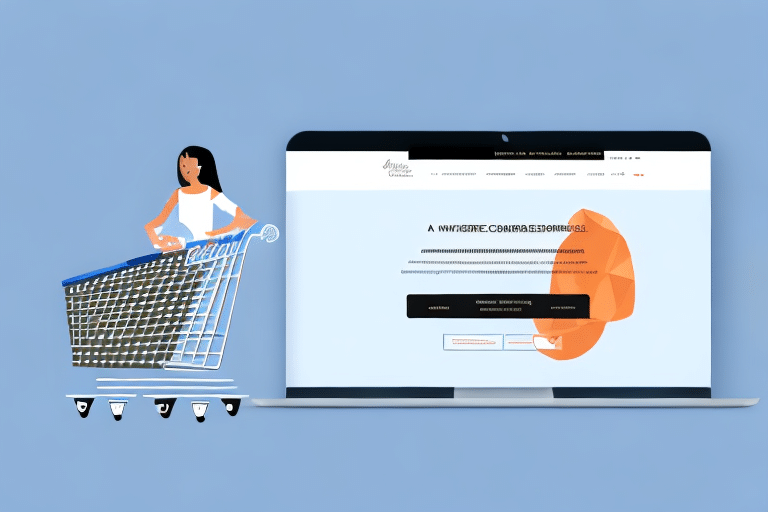10 Traits of Stellar Ecommerce Web Design
Ecommerce websites have become an essential part of every business. In today's digital world, having an online presence is crucial to remain competitive and cater to the needs of the modern customer. However, not all ecommerce websites are created equal. The design of your ecommerce website plays a crucial role in attracting and retaining visitors, driving engagement and sales, and building a loyal customer base. In this article, we'll explore the ten traits of stellar ecommerce web design that every business owner and web designer should know to create an effective and engaging ecommerce website that customers love to use.
The Importance of User Experience (UX) in Ecommerce Web Design
User experience (UX) is the foundation of any successful ecommerce website. A good user experience means that your customers can easily find what they are looking for, navigate through your website quickly, and complete their transactions swiftly and efficiently. A positive user experience leads to higher engagement, lower bounce rates, and more sales. According to a Nielsen Norman Group study, improving UX could increase conversion rates by up to 400%.
Mobile-Friendly Design
With over 54.8% of global web traffic coming from mobile devices as of 2023, ensuring your website is mobile-friendly is crucial. A responsive design adapts to different screen sizes and resolutions, providing a seamless experience for users on smartphones and tablets.
Intuitive Navigation
Clear and concise navigation helps users find products effortlessly. Implementing a well-organized menu, effective search functionality, and filtering options can significantly enhance the user experience.
Optimizing Ecommerce Web Design for Mobile Devices
Given the surge in mobile shopping, optimizing your ecommerce site for mobile devices is no longer optional. A mobile-optimized website not only improves user experience but also boosts your SEO rankings, as search engines prioritize mobile-friendly sites.
Speed and Performance
Mobile users expect fast loading times. Optimizing image sizes, leveraging browser caching, and minimizing HTTP requests can help improve your website's speed. Tools like Google PageSpeed Insights provide actionable recommendations for enhancing performance.
Touch-Friendly Elements
Ensure that buttons and links are large enough to be easily tappable on smaller screens. Adequate spacing between interactive elements prevents accidental clicks and improves overall usability.
The Role of Visual Design: Colors, Typography, and Imagery
Visual elements play a pivotal role in ecommerce web design. They not only enhance aesthetics but also influence user behavior and perceptions.
Color Psychology
Colors can evoke specific emotions and actions. For instance, blue often conveys trust and security, making it a popular choice for ecommerce sites. According to a Help Scout study, color increases brand recognition by up to 80%.
Typography
Readable and aesthetically pleasing fonts improve content accessibility. Consistent typography across your site reinforces brand identity and enhances user experience.
High-Quality Images and Videos
Using high-resolution images and engaging videos can significantly boost product appeal. According to a Marketing Dive report, products with professional images convert 30% better than those without.
Minimalist Design for Enhanced User Engagement
Minimalism in web design focuses on simplicity and functionality. By removing unnecessary elements, you can direct users' attention to essential components like products and calls-to-action (CTAs).
Clean Layout
A clutter-free layout enhances readability and reduces cognitive load, making it easier for users to navigate and find what they need.
Effective Use of Whitespace
Whitespace improves content focus and helps in highlighting key elements, leading to a more organized and visually appealing design.
Incorporating Social Proof to Build Trust
Social proof leverages the influence of others to build trust and credibility. Displaying testimonials, reviews, and user-generated content can significantly impact purchasing decisions.
Customer Reviews
Featuring authentic customer reviews provides prospective buyers with valuable insights and fosters trust in your products and services.
Trust Badges and Certifications
Displaying security certifications and trust badges reassures customers about the safety of their transactions, encouraging them to complete purchases.
Effective Navigation and Categorization
Proper navigation and structured categorization are essential for helping users find products quickly and efficiently.
Clear Menu Structure
A well-organized menu with logical categories and subcategories enhances user experience by facilitating easy product discovery.
Advanced Search and Filtering
Implementing advanced search options and filters allows users to narrow down product selections based on specific criteria, improving overall satisfaction.
Streamlined Checkout Process to Boost Sales
The checkout process is a critical component of ecommerce websites. A smooth and efficient checkout experience can significantly reduce cart abandonment rates.
One-Page Checkout
Consolidating the checkout process into a single page minimizes steps and reduces the likelihood of users dropping off before completing their purchase.
Multiple Payment Options
Offering a variety of payment methods caters to diverse customer preferences and can increase conversion rates.
Leveraging Personalization Techniques
Personalization tailors the shopping experience to individual user preferences, enhancing engagement and driving sales.
Product Recommendations
Utilizing algorithms to suggest products based on browsing and purchase history can increase average order value and customer satisfaction.
Customized Offers
Offering personalized discounts and promotions based on user behavior can incentivize purchases and foster loyalty.
Ensuring Website Speed and Performance
Website speed is a crucial factor in user satisfaction and SEO. Fast-loading websites provide a better user experience and are favored by search engines.
Optimizing Images and Assets
Compressing images and minimizing the use of heavy scripts can significantly improve page load times.
Reliable Hosting Solutions
Investing in high-quality hosting services ensures your website remains fast and accessible, even during high traffic periods.
Building Trust Through Security and Transparency
Trust is fundamental in ecommerce. Ensuring your website is secure and transparent fosters customer confidence and encourages repeat business.
SSL Certificates
Implementing SSL encryption protects customer data and signals to users that your site is secure, which can positively influence purchasing decisions.
Clear Communication
Providing transparent information about shipping, returns, and privacy policies builds trust and reduces potential hesitations during the purchasing process.
SEO Optimization for Enhanced Visibility
Search engine optimization (SEO) is vital for increasing your ecommerce website's visibility and driving organic traffic.
Keyword Research
Identifying and targeting relevant keywords ensures your products appear in search results when potential customers are looking for similar items.
Optimized Product Descriptions
Writing unique and detailed product descriptions with targeted keywords improves search rankings and provides valuable information to customers.
Best Practices for Effective Product Listing Pages
Product listing pages are pivotal in guiding users through the purchasing funnel. Well-designed product pages can enhance user experience and boost sales.
Comprehensive Product Information
Providing detailed descriptions, specifications, and high-quality images helps customers make informed purchasing decisions.
Customer Reviews and Ratings
Including customer feedback and ratings on product pages adds credibility and assists users in evaluating products.
By incorporating these ten traits of stellar ecommerce web design, you'll create an effective, engaging, and profitable ecommerce website that customers love to use.






















